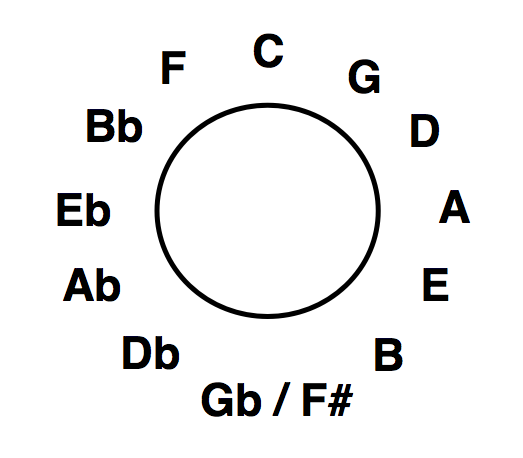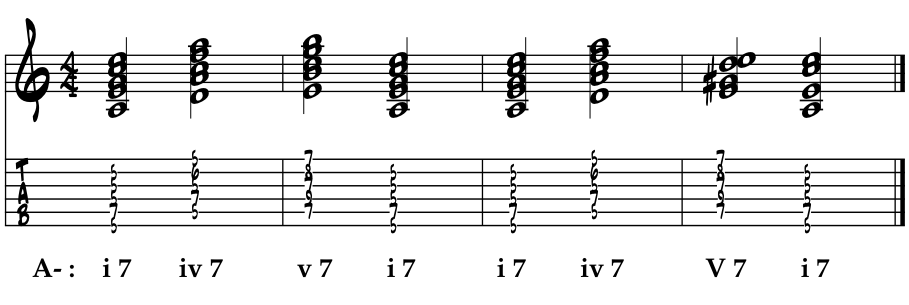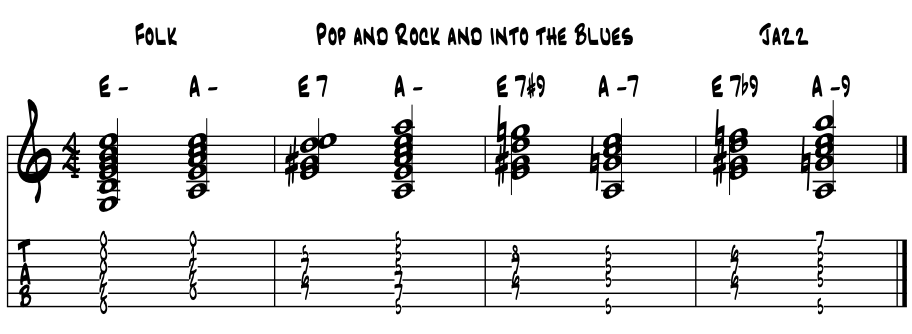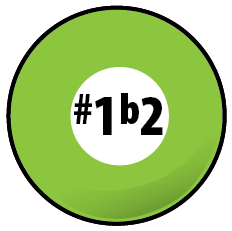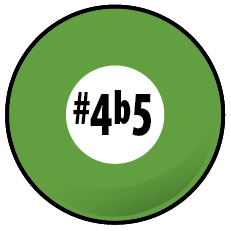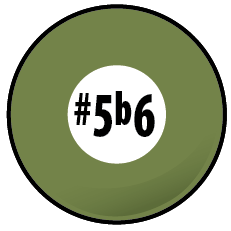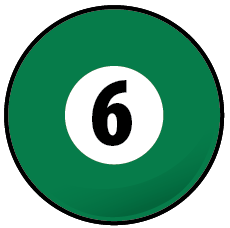~ Five ~ 5 ~ perfect 5th ~ v ~ V7 ~ XII ~ ~ the dominant, directing our way home :)
~ Americana V7 and the blues ~ ~ our tone to herald, to lead the way ~ ~ V7 ~ perfect 5th ~ a pedal tone ~ V7 chord type ~ Mixolydian ~ blues chords ~ ~ original sourcing in minor ~ ~ V7 and the chromatic blur ~
|
In a nutshell. In our Americana musics, we theorists call the fifth note of the diatonic scale the 'dominant' pitch. And as its name implies, it tends to dominate over the other six pitches in most songs while directing the flow of the tension and release to the tonic pitch. In Blues music, the dominant V7 is the tonic chord. In our pure theory studies this can create some wobbly spots in the 'perfect closure' that glues all our music together in a diatonic world, especially in all the harmony / chords etc., we gained from the Euro cats. Not to worry, there's an unmistakable tritone dissonance that makes a dominant chord V7 a dominant chord V7, so once the ear can hear the 'blues rub' tritone within, we'll be golden ever after. In Essentials, the dominant is nicknamed the 'traffic cop.' For its ability to sort things out and get everything going in the direction it needs to go. We often add a 7th to this dominant triad to further energize this directing ability. As we'll see in the following discussions, this dominant pitch, triad and V7 chord not only directs our musical traffic, it'll get its own mode, and as a V7chord, its own musical style. The blues? Yep, the blues. |
|
The organic power of the dominant Five often becomes the aural and emotional energizer for telling our stories in music. For when the pitches and rhythms all align to create Five, all folks in the mix can spiritually and bodily sense the energy to direct motion to something cool in the story. What you bring with Five determines the flow of how the story is told. |
To 'herald.' Since the ancient days, the perfect 5th both makes the clarion call, setting the stage for a noble story to be told. This next idea heralds a musical story we all might know, or learn here if needed, that features the heralding power of Five. In 'C' starting on the dominant pitch 'G.' Example 1. |
 |
'Oh beautiful ... for spacious skies ... for amber waves of grain ... Picturesque words that hold the original intentions our founders dreamed of for all. This is a great melody to find your own inner expressive voice with, as the chances are you've known it for a spell now. So play it will all the art juice you can muster and build up your interpretive melodic powers. Each pitch coming straight from your heart. Or learn here if needed, or catch up with 'Brother Ray' Charles, one among many many Americana musical stars that have loved this song so deeply that they recorded it for all to enjoy. |
|
A new 'herald.' Well, new from the 1950's or so. Here's the classic riff of root and its fifth,fifth / root actually, making that 'noise' that makes ya wanna get up and dance some rockin' steps. Example 1a. |
 |
Cool ? Classic double stop yes ? And are there any dance styles that originated in the 50's with this then new, clarion call ? |
Get Five to swing.' The fifth note is one powerful player in our musics and swings deep in all Americana. Into the wayback and across the pond to find a few pitches we might also all know by heart. Now to get them to swing. Got clicks ? Sing and swing yet? Find the line by ear? Here's the ditty, featuring the fifth note of our 'C' major scale. Example 1b. |
no sound
 |
Ever quote a bit of one melody in another ? Jazz players often do this for a chuckle and these last few bars will fit in a zillion or so songs. |
Our tone to lead the way. Sure enough in the blues colors, both our Four and Five notes are each a half step away from the tritone. So in bringing the blues might we 'slip' into Four from a 1/2 step above? Or blue energize the already dominant Five from a half step below via our 'nearest tritone?' Here we add in some 'blue tritone grace' for a vanilla stepwise idea. Sharp Four into Five. Pure major triads first, then some blues. Example 5a. |
 |
The perfection. Our perfect fifth interval above its root pitch is just that. Perfect. At least to our human ways of hearing things. We theorists call this interval perfect simply because of its aural balance of blending when sounded with its tonic. |
There's lots of different ways and reasons we can quantify and define this, but a 'perfect' designation really just comes down how good it all sounds in comparison with the other intervals. Listen and define the aural perfection for yourself. Perfect 5th's. Example 1b. |
 |
So ... close enough for jazz? Here any waves, beats or cycles in the sound? The idea of 'beats' means a lot of things these days, right here 'beats' means a tonal warbling in the sound of the combined pitches, usually our first indication that things are not quite in tune. We've three musical interval sounds of perfection; the octave, the 5th and the 4th. Example 1c. |
These three are the perfect intervals. Our purest musical tones organically ordered direct from the universal. All three are big players in making the Americana sounds. Surely the One, Four and Five numerics ring a bell? |
A perfect authentic cadence. An essential idea from our Western Euros have in establishing one pitch as our tonal center is in part secured by creating a sense of tension and its resolution towards one pitch, and its related pitches within a key center. |
At the core of creating this tension / resolution / tonal center is the perfect authentic cadence. Again our term 'perfect', meaning that it's creating the highest standard of finality in resolution. That if these three chords happen in succession, there's little doubt about the tonal center. Please examine this chord cadence in 'C' major. Example 1d. |
 |
Easy to feel the motion towards the resolution yes? Perfect? Well it is in Euro theory lingo. What we theorists are often interested in is what creates the degree of aural and emotional confidence in the resolution, which is often a resting or stopping point in the music. Root position chords help. Motion between core diatonic components Four / Five and One helps. That our tonic pitch is the top and bottom note of the last chord voicing helps. All of these contribute to our sense of coming home, to a sense of being at rest. All of these are what make up the 'perfection' of this cadential motion. |
Cycle of fifth's. The interval of the perfect fifth is a key player in our music and its theories, so perhaps no surprise that it lives at the historical core of our silent architectural organization of the resources. This cycle of fifth's illustration, thought to have originated at least in theory with Pythagoras, is today a solid visual organizer for all kinds of coolness. Paired with a metronome and a bowl of gumption, do let the shedding begin. Cycle of fifth's diagram. Example 1e. |
|
|
Got all 12 pitches in a nice, handy roundup. With C at 12 o'clock, most songs in most styles center around the top keys of the circle. For guitar, usually each sub-genre of a main style will have it's own favorite key center. You got's one yet ? Blues in 'A?' 'G?' Voodoo in 'E?' |
In the harmony. There's surely a couple of essential harmonic motions surrounding the Five chord that weave their way throughout our entire Americana songbook we should be hip to. These next ideas are sequenced to create a bit of an evolution of the harmony, as we move through our most common and popular styles of music. |
One / Four / Five / One. Thanks to the way we've tuned up our pitches over the last 500 years or so, we get a fully functioning One / Four / Five chord progression in both the relative major and minor tonalities, within any one given key center. We have 12 key centers right? Paired 'relatives' yes ? Cool. Let's examine the pitches and spell the triads sketched out here, in the paired relative keys of 'G' major and 'E' minor. Example 2. |
scale degrees |
1 |
2 |
3 |
4 |
5 |
6 |
7 |
8 |
G major |
G |
A |
B |
C |
D |
E |
F# |
G |
arpeggio |
G |
B |
D |
F# |
A |
C |
E |
G |
One / G major |
G |
B |
D |
. |
. |
. |
. |
. |
Four / C major |
. |
. |
. |
. |
. |
C |
E |
G |
Five / D major |
. |
. |
D |
F# |
A |
. |
. |
. |
. |
. |
. |
. |
. |
. |
. |
. |
. |
E minor |
E |
F# |
G |
A |
B |
C |
D |
E |
arpeggio |
E |
G |
B |
D |
F# |
A |
C |
E |
One / E minor |
E |
G |
B |
. |
. |
. |
. |
. |
Four / A minor |
. |
. |
. |
. |
. |
A |
C |
E |
Five / B minor |
. |
. |
B |
D |
F# |
. |
. |
. |
Well there it is, well over half of the relative major / minor triad tamale in one fell swoop. Run the pitches of our 12 paired key centers through this chart and we're on our way along the golden road of unlimited devotion. Using barre chords, hear the above motions in the following examples. Example 2a. |
 |
Do these last progressions remind you of any songs? This One / Four / Five / One and variations cores the majority of our songs over the full spectrum of our styles. And surely adding in a weaving of these six diatonic major and minor chords together, creates our core diatonic harmonic palette. Cool? This bit of theory here is a true super theory game changer. Thus empowered, start to take apart the songs under your fingers to see this weave in action. Along these lines, recognize this next chord motion from wayback? Example 2b. |
 |
Sound familiar? Pachebel's Canon in D goes wayback, a classic weave of our diatonic major and minor triads from the early 1700's or so. |
|
A classic G / C / D'er. I think we've all heard this a time or two when jamming with players of the folk / country tradition. Someone calls a tune. Someone asks about the chords. "Oh, just another one of them G / C / D'ers ... nothing too fancy pal." So we theorists might think; One / Four / Five in the key of G major. 'G, C and D.' Easy. Example 2c. |
 |
A "G / C / D'er" in action. Back in the 70's there was a very popular tune called "Dueling Banjos" that really became a standard for the pickers. It really captures the magic of the style and is anchored in this classic motion of G / C / D combination. Check it out as time permits. |
|
Of course we can use our open chords to create this diatonic motion in other major keys as well. C, D, A, and E are common enough. Children's songs, folk, on towards country and bluegrass stylings, often rely on the big open guitar sound created with these open chords. |
As we venture towards country and bluegrass we begin to pick up more areas in the music for soloing. Here's a common open G pentatonic scale shape, pitches and improvised line over the changes just above. Ex.2d. |
 |
Cool ? Hear some Americana ? Note the line ends on Five ... where to next ? |
Blues chords. The One / Four / Five / One chord progression is a mainstay for the blues, which was adopted by the early rockers and evolved from there. In this next idea we use the same basic idea as above but with barre chords and evolve our open G scale shape into its core minor pentatonic / blues scale shape. Basically the same shape with x's but now positioned up on the third fret. Do note the addition / evolution of our chords as we add in the blue 7th spices to each of the chords. This is the way of most of our blues harmonies and begins our blues to jazz merge. Example 2e. |
 |
X marks the spot. Those in the know will know that the x's in the above fretboard diagram mark the tritone blue note, that essential spice that elevates the minor pentatonic group into the core blues pitches of the Americana sounds. |
Blues and jazz. These two styles in Americana music are almost two ends of our style spectrum. The 12 bar blues is a taproot of jazz, providing an endless opportunity for improvisation, variation and pure testimony. These 1 4 5 changes base the form and in jazz, there's a myriad of chord substitutions to explore, as your time and interest permits :) |
The dominant. We term the fifth scale degree above our root pitch the dominant in both our major and minor tonalities. For it not only stabilizes the root note of our key center when we sound them together, as say in our major and minor triads, but it is the pitch we rely on most when wanting to re-establish our tonic pitch, or any pitch for that matter, as our tonal center. |
So much of good art is the balance of tension and its release. All of life really. By its tone in relation to the tonic, the dominant sets the mojo juice in motion, our tonal gravity, creating an impending sense of returning to our tonic pitch starting point, our aural predictability. In this next idea we use the dominant pitch to set up the tonic first in the major then the minor color. Example 2. |
Hear or think of any words or story for the line? Hooks? Usually it works the other way around; hook then line :) |
The dominant pedal tone. As the term implies, the dominant pedal is one we can step on to make cool things happen. Like what? Well, if we want to suspend or float a bit while creating the sense of impending resolution and arrival, the dominant pedal tone is surely one way to establish this sense of energy and set up an 'event' in our music. Most often found on the bottom of the mix, we've a couple of options. Here's the first, as the lowest pitch in the mix, a lower pedal. Example 2a. |
Cool huh ? Probably pretty 'master of the obvious' that bass players love these things :) |
Up on top as an 'inverted' pedal tone. In this position, our dominant note is now moved all the way to the top most pitch. Here it assumes a similar role as the lower pedal tone, gluing the music together towards a destination, but the note is up on top, where hopefully it's as clear as a bell and thus a beacon of aural color and sound to lead towards a resolution, or not as the case might be. Example 2c. |
Cool with the idea of the dominant pedal? We don't hear it all too often these days and that's a shame really, as it quickly generates a ton of motion towards an impending event in the music. Not much really in folk, sometimes in the blues, not infrequent in bluegrass especially effective with upright bass. Country? Not too uncommon. In pop these days as it is easy to 'synth' sustain any pitch really. So in jazz mostly? Yep, and probably mostly on the turnarounds, and especially as a booster, as a soloist is heading towards the climax of their solo, if appropriate, in the penultimate or last chorus of their ride. |
Can other pitches besides V / Five be the pedal tone? You bet. Here's a solid open E chord lick featuring a tonic / One pedal, both the lower and upper notes. Ascending diatonic motion in E major. Example 2d. |
Just getting a few extra miles out of a couple of shapes by moving up the neck following a diatonic stepwise motion one through eight. |
The dominant V chord. The chord we build on the fifth scale degree of both the diatonic major and relative minor we term our dominant chord. And as hinted at just above, at any point in the music the sounding of the dominant generally creates a sense direction towards an impending resolution. |
Of course the music does not have to resolve in any traditional sense, as in the case of American blues, but anytime we want to establish a pitch as our tonic, sounding its dominant pitch, and better yet its dominant chord, is a sure way to begin the process to get there. One / Five / One major and minor. Example 2b. |
 |
The core cadential motion. The Five / One cadential motion in this last example is really at the traditional core of how we Westerners decide our musical tension / release dynamic with chords. We do have a number of different types of cadences, using different chords and voice leadings. Each has its own strengths in determining the various degrees of tension / release, structural points in musical form, and tonic pitches and the key scheme of the music. |
|
In the above example, we've identified the keys by letter name and the chords by upper and lower case Roman numerals, which is common in college music theory analysis. And do note that first pairing of barre chords, there's a very common motion that can help us guitarists cover a wide range of music and chord progressions with ease and confidence. The open minor chords provide us with some rather serious core minor colors. I wonder how far back in our history those shapes go? |
Five chord in the music. Nearly everywhere. We use cadential motions in all of our styles, tempos and grooves. For even the simplest of our songs will have an ending. And at that ending there is always some sort of pitch / chord / melody motion that tells us that this is the end of the story or song, thus a closing off motion. |
So is any Five / One motion a cadence? Pretty much. Know any tunes without some sort of Five / One motion somewhere along the way? Vamp tunes that oscillate between Two and Five? A more gospel One / Four plagal cadence in place of Five? Maybe a modal blues? Other options to Five / One ? Of course, imagination wins. |
V7 / Dominant seventh chord / major key. Once the diatonic 7th scale degree is added in, we now have a tritone interval ( between the 3rd and 7th ) within the chord to better work our sense of tension and its resolution. Examine the diatonic pitches of G7, the dominant chord in the key of C major. Example 3. |
|
 |
Dominant chord / minor key. In the minor tonality, we build its dominant chord on Five in the same fashion as above. Thinking in the key of A minor, examine the pitches as we find its dominant chord pitches in the chart below and then sound them out in the musical example which follows. Example 3a. |
|
Minor triad. As Five is a minor triad, we've a balance of minor One / Four / Five and major One / Four / Five chords, all from the same core of our diatonic grouping of pitches. Yin /Yang ? An S.T.G.C.? Yep. Example 3b. |
|
 |
Where in the music. Three minor triads, One / Four / Five, gets us right to the blues. Mostly then with a 12 bar form. In folk music A minor is a good key to get all three minor triads with open chords. E minor also. Ex. 3d. |
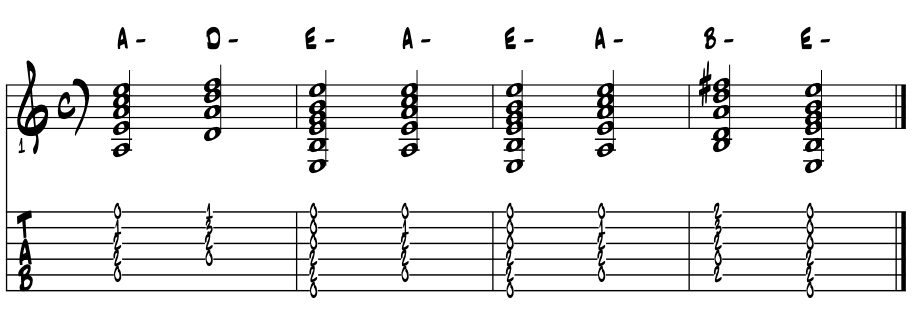 |
Island rhythms. The folk music of Jamaica loves these minor chord changes motored by the essential beat of the reggae magic. Here we are using the core diatonic minor colors in barre chords to support minor pentatonic melodies to dramatic effect. Pretty much the same ideas as above but with barre chords. Example 3e. |
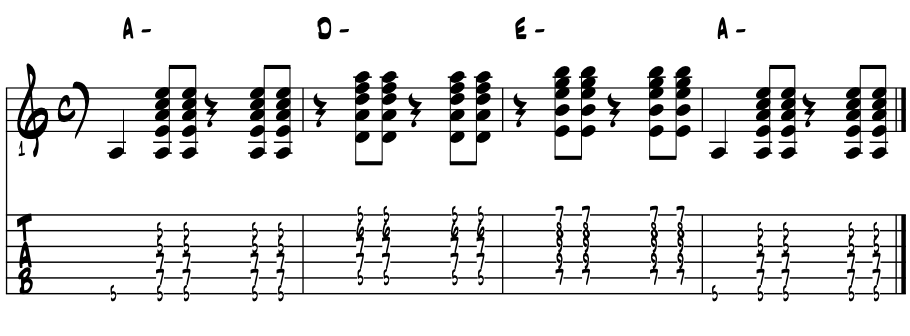 |
For us string players, the reggae thing is a cool groove to conquer. The rhythm guitar parts can demand some serious strum hand work and technique metronome shedding to find it. Vocal melody line pitches are clear tellers of the story being told in the song. Always a solid source for melody ideas. For adventurous cats, learning enough of the basic reggae bass parts to cover a song or two, finds us in some very challenging chops and time / groove situations. |
Adding the 7th's. We can take this basic minor One / Four / Five chord progression a step further and soften up each of the chords. We'll do this by simply adding the diatonic 7th to each of the triads. Example 3f. |
Hearing anything new and cool in these examples? Sometimes it takes a while to get used to the new chord sounds and how they fit together. And then sometimes it all just bolts right up. Adding the 7th opens up the discussion of chord type, which streamlines yet expands our harmony resources at the same time. Imagine that :) |
Somehow, find yourself a recording of singer / composer / multi-instrumentalist Van Morrison's "Moondance" to sum up the above into magical timeless art :) |
|
A one pitch game changer. Compare the following chord progressions as we slip in a leading tone into the minor tonality. In another section of this book we call this new grouping the harmonic minor scale. Examine the pitch letter names and sound of the added leading tone into the natural diatonic minor group. Ex. 3g. |
|
Yea, one pitch can make all the difference. Hear the difference in the last two cadences? In the key of A minor, the non-diatonic G# in the last bar evolves the basic triad from minor to major, and in doing so, we create the tritone interval between the third and seventh within the V7 chord. And bingo was the name oh ! |
Adjusting our Roman numeral symbols, v7 lower case for minor becomes an upper case for V7 major. And surely we've seen V7 before in lots of cool spots. Please examine the letter names and their evolution of the pitches in chart form as we evolve scale to arpeggio to chord. Ex. 3h. |
|
Cool with spelling chords? Surely a STGC'er for the emerging theorist. In this next idea we go back and forth between different voicings of the two different chords. Example 3f. |
Minor to major. Hear the slight shift in each of the chord pairs? Not sure of the words to describe it. Maybe 'somber to uplifting? You decide. The shift from G to G# changes the sound and function of the chords here. With function being the operative word. |
Theory in the music. This simple evolution can be somewhat of a big deal here in Theoryville. That really depends on the musical art you're wanting to create. Leading tones have the DNA to unlock new key centers. If your music generally lives in one key, then really not that big a deal. So that covers nearly all of our folk, country, blues, pop and rock music. Maybe jazz it up ? |
Advancing the theory. Jazz players often consider things in regards to chord type, so raising the 3rd and adding the 7th is a big deal in theory. That chord type also opportunes multiple root possibilities, thus evolving chord progressions and chord substitution, thus evolving the bass line stories of our tales. |
Five / One motions in minor. So in our various styles of music, we use different colors to shape the historical and style character of the sound. In the following examples we create various Five / One cadential motions using chord voicings common to our styles of Americana music. Exceptions to everything of course and these ideas are not really the rule, just common practice. Example 3g. |
In this last idea we've covered the basics of Five. Diatonic pure in the folk as a minor triad. Vanilla V7 for pop and rock, country's right in there too. In the blues and jazz we try two different color tones to further shape our resolution. The superstark #9 or b9 colotones becoming rather blues / jazz essential at some point. Here they are again. Example 3h. |
Strong eh? So, we've now included the various incarnates of what we term a 'dominant chord type' and as such, our cadential motions in the minor tonality evolve and find their way into the evolution of American harmony. Trick in knowing this is having a few choices. |
For chances are excellent that when playing a song, the same spots of music will come up a number of times as we cycle through choruses of the form of the song. Nice to not have to play the same thing every time. Options they are. Oh, is variety still the spice of life out there ? |
So are the V7 and minor 7th both chord types? Before we move on, it should be noted that both V7 and i-7, all of the diatonic minor One 7 / Four 7 / Five 7 chords, do indeed get a chord type designation. V7 with its tritone interval within stands alone in any environment. The minor triad / minor 7th combination is the basis of what is commonly termed a Two chord type or harmony. The Two chord being the chord built on the second degree of the major scale. Tonic / One is the third chord type we get. Just need the three. Examine the interval building blocks of the V7 dominant chord type. Example 4. |
|
This distinction simply revolves around the idea that the major tonality is the center of our local theoretical musical Americana universe. And as such it provides a starting point for building our perspective of the resources. And just counting the number of songs within the American songbook that are written in a major key versus the number of songs written in a minor key, shapes this perspective of our theory discussions. |
V7 of V7 / secondary dominant. Now that we're back to a V7 chord and type, let' explore some of the common motions associated with Five. Leaving the diatonic realm, the Five of Five harmonic motion is simply a cycling of dominant chords. The most common root motion for these cycles ? Why, the perfect fourth. |
Into the wayback machine to the 1920's days of early Americana jazz, a most common chord progression used a cycle of V7 chords as the harmonic motion in creating the magic. Most popular of these songs still today might just be the "Sweet Georgia Brown" from 1925 or so. It became the theme song for the basketball wizards; The Harlem Globe Trotters. As the symbols imply, 'V7 of V7 of V7 ...', we're simply moving dominant 7th chords one to the next to the next before resolving to One. |
|
In Five of Five motions we're usually backpedaling, moving the roots of the chords by perfect 4th around the cycle, although using the descending chromatic motion of the tritone sub is not uncommon in brighter tempos. Here's the V7 of V7 of V7 to One opening harmony of the first phrase of this "SGB" classic Americana song, as we condense its 16 bar A section into four measures. Here in F major. Example 4. |
Sound familiar? Cool. Very common really. The repeating of the line three times makes it sound like an outro yes? Three times and out ! In this next idea we evolve our common 'teenager in love' changes; the One / Six / Two / Five / One in a similar manner. Example 4a. |
Here the Six chord evolve? Click it again. The new pitch is 'C#' yes? Which is the leading tone, a half step below 'D.' And the leading tone wants to resolve to its tonic, well in some cases surely. And just to be on the safe side and accurate here, let's call this 'Five of Two', and then all is well in Theoryville. So in V of V cycles, we're altering our diatonic pitches to become the leading tone pitch to the root pitch of the next chord? Yes Amigo, that is the case. Yet another "Bingo." |
Making the Six chord, which is diatonically minor and the home root pitch of the relative minor, so really really minor, into a V7 chord gives us that V7 tritone push to the next chord, the D minor / Two chord in C major. So any time we use a V7 chord to get to our next chord or destination, we're just giving it a bit more oomph of focus and direction. And ... (drum roll) ... we add a new pitch for 'soloing through the changes.' |
So why Mixolydian and Five? When first discovering the pitches of the Mixolydian mode, one easy way to find the pitches is to simply look to our theoretical 'loop within a loop' properties and locate the pitches. Easy for us then as the Mixolydian mode is built on the fifth scale degree of our diatonic major / minor group of pitches. Extracting G Mixolydian from C major. Example 4. |
|
Mixolydian mode. As one of our original Greek or church modes, the Mixolydian mode is an essential color for many of the core sounds of Americana music. Dig the following classic line and even begin to get it under your fingers if necessary. Example 4b. |
 |
Ya hip? "Old Joe Clark" goes way back in our American songbook and evokes the Mixolydian color right out of the gate. The 'Bb' in the first bar is the initial giveaway. For it is just the one pitch, the b7, that distinguishes Mixolydian pitches from our diatonic major / Ionian scale. So basically a diatonic major scale with its leading tone lowered by half step to a blue seventh ( b7). Compare the pitches now thinking the pitch C as our root note for both groups. Example 4c. |
|
Folk, Country, Bluegrass, Blues and beyond. Cool ? All about the quality of the 7th. Ever wonder if songs with this kind of sound helped evolve using dominant harmony in backing the blues melodies? Surely the two styles were played in the same geographic area down along the American eastern seaboard and inland to the Mississippi River valley. Many of the early European settlers to this area came from Scotland, Ireland, Great Britain. Thus we enjoy the collection of "fiddle tunes, reels, sea shanties and jigs" they brought along, many which like the melody just above, beautifully carry the emotional essence of the ancient Mixolydian character. |
|
For players interested in this unique Mixolydian sound and these musical styles, this geographic location is the home where these folk's families have lived through nearly a dozen generations now. Almost a million of the early African American settlers brought to this geographic area by the early 1800's made their homes and music in this area, thus came in touch with this flavor music. All of these folks were neighbors of sorts, their ancestors and all the players who followed, helped to create the core of our Americana musical mix. |
An all time favorite. John Lennon and Sir Paul McCartney's 'Norwegian Wood' is an all time favorite Mixolydian melody. Still played on the radio, it has a Winter holiday feel and is in 3/4 time, making it a cool jazz waltz song for those so inclined. |
|
Review. Well with a name like 'dominant', we probably should not be surprised at how this fifth position within our diatonic scale plays such a crucial role in making the magic happen. We find it in all of the styles, and as we advance our pitch count stylistically, the dominant chord's malleability while retaining it directive powers is rather astounding to us mere mortal theorists. And, it's the basic harmony of Americana blues. |
The Mixolydian mode is truly evocative of Americana and artistically crafted and sounded on period instruments, will quickly take us back to earlier eras of history. And as we do have some historical records taking Mixolydian back nearly three millennia now, no wonder it is a powerful player in all of our musical styles and their myriad of genres. |
For the American modernist, the dominant chord's theoretical properties have made possible a couple of core evolutions through our history. Once paired with Two, the modulation process was further streamlined allowing for change of keys at a moments notice. And once b9 enters the V7 equation, the upper structure fully diminished 7th chord opens up a vast array of new potentials with a distinctly minor 3rd, bluesy quality. Paired with the more traditional motion by perfect fourth sets the stage for "Giant Steps" and then beyond. |
|
So what's next? Write a song in Mixolydian mode? Explore the V7b9? Look for new dominant chord shapes along the lines of musical style. Or stay on the same track and explore up a half step, so off to #5 / b6 ? Regardless, your choice of course, but first a quote. |
“Nothing ever comes to one, that is worth having, except as the result of hard work." |
wiki ~ Booker T. Washington |
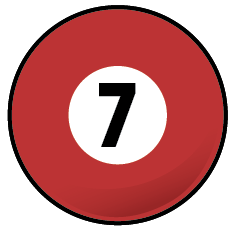 |
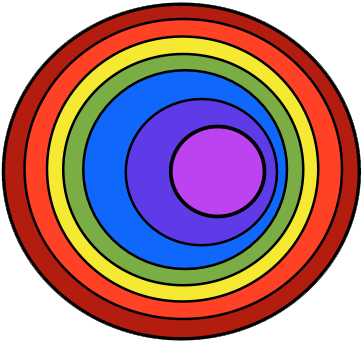 |
|||||||||||
 |
 |
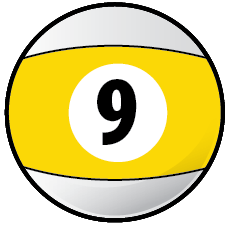 |
 |
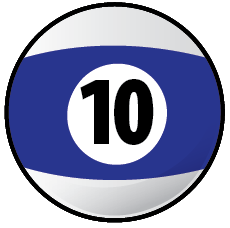 |
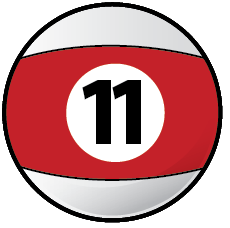 |
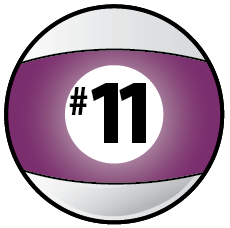 |
 |
 |
 |
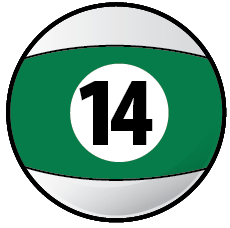 |
 |
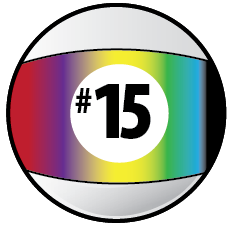 |
References. References for this page's information comes from school, books and the bandstand and made way easier by the folks along the way. |
Find a mentor / e-book / academia Alaska. Always good to have a mentor when learning about things new to us. And with music and its magics, nice to have a friend or two ask questions and collaborate with. Seek and ye shall find. Local high schools, libraries, friends and family, musicians in your home town ... just ask around, someone will know someone who knows someone about music and can help you with your studies in the musical arts. |
|
Always keep in mind that all along life's journey there will be folks to help us and also folks we can help ... for we are not in this endeavor alone :) The now ancient natural truth is that we each are responsible for our own education. Positive answer this always 'to live by' question; 'who is responsible for your education ... ? |
Intensive tutoring. Luckily for musical artists like us, the learning dip of the 'covid years' can vanish quickly with intensive tutoring. For all disciplines; including all the sciences and the 'hands on' trade schools, that with tutoring, learning blossoms to 'catch us up.' In music ? The 'theory' of making musical art is built with just the 12 unique pitches, so easy to master with mentorship. And in 'practice ?' Luckily old school, the foundation that 'all responsibility for self betterment is ours alone.' Which in music, and same for all the arts, means to do what we really love to do ... to make music :) |
 |
"These books, and your capacity to understand them, are just the same in all places. Always bear in mind that your own resolution to succeed, is more important than any other one thing." |
|
Academia references of Alaska. And when you need university level answers to your questions and musings, and especially if you are considering a career in music and looking to continue your formal studies, begin to e-reach out to the Alaska University Music Campus communities and begin a dialogue with some of Alaska's finest resident maestros ! |
|
~ |




